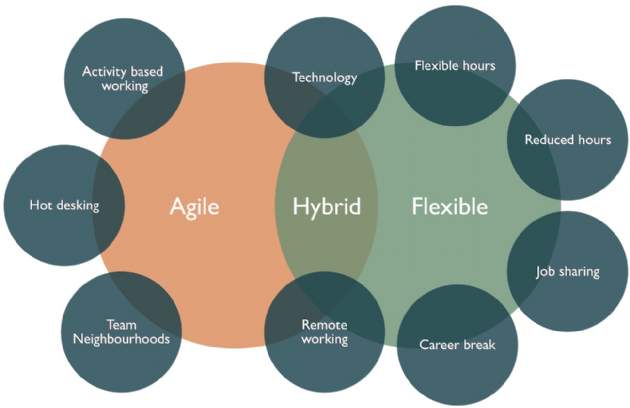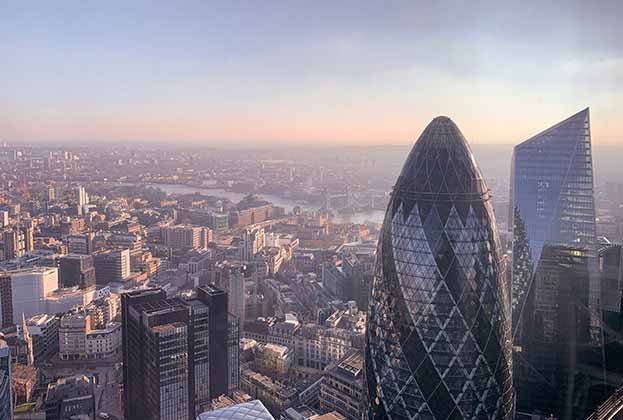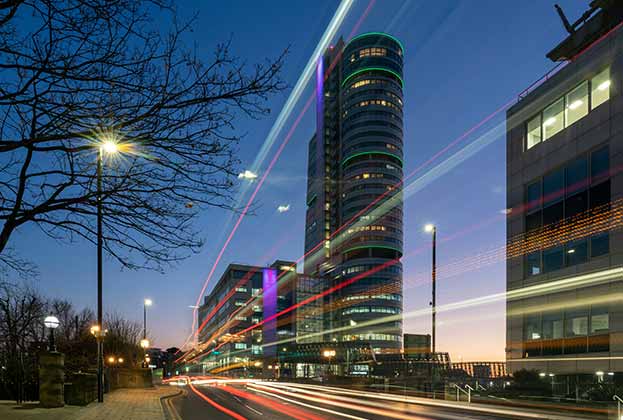Since the start of the Covid-19 pandemic, office-based employees across the world have become overly familiar with working from home. This has provided a catalyst for a change in mindset, particularly in regards to where, how and when work is carried out. However, throughout lockdown sentiment has fluctuated and while there are certainly perks, it has highlighted just how important the office actually is.
With this in mind, it makes sense that employees and employers would want a hybrid model that can effectively accommodate both ways of working. So, how would this operate in practice?
Hybrid working is a combination of both agile and flexible working models (see chart, below). Though agile and flexible may seem interchangeable, they are in fact two very different things. Flexible working primarily focuses on an arrangement between an employer and employee, while agile working is a methodology that looks at getting the work done with greater flexibility and minimal constraints. Agile working also looks at the adoption of new ways of working for increased productivity and greater mental and physical wellbeing.


.jpg)
-impact-the-office-sector(1).jpg)

.jpg)






